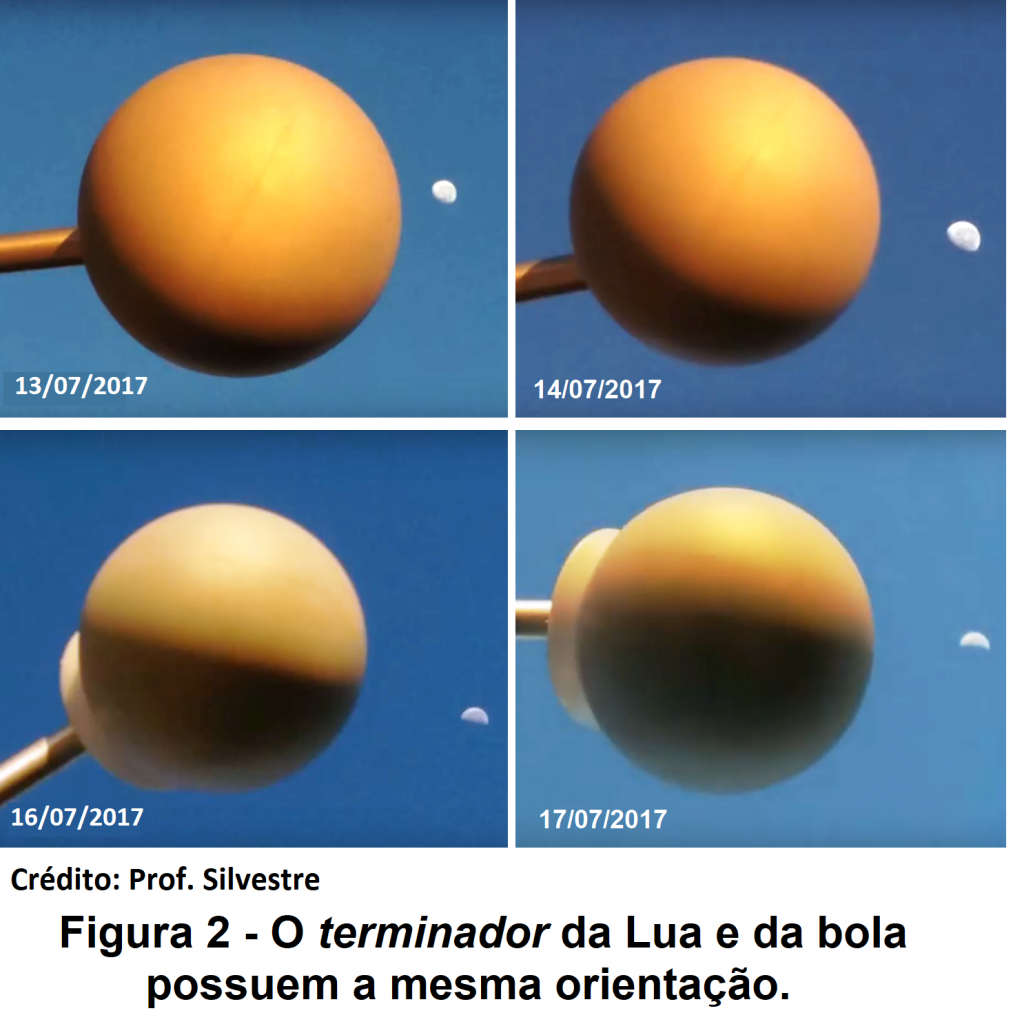Hi friends. I kinda believe in Flat Earth, to be honest, I don't have too much mathematical and geometric knowledge but i am willing to learn more about everything. I'm open to many ideas and I like to understand all propositions and see if they make sense to me, and I don't get too attached to any one in particular. So, I read about this topic on a brazilian blog by a college physics professor. The point is, we can attest to the greater distance of the sun from the earth than the moon from the earth by taking a sphere and comparing its terminator to the moon's terminator. He said:
"If we imagine two spheres illuminated by a light source (see Figure 1) it is easy to conclude that the orientation of the terminator is very different when the distance between the spheres is similar to the distance from the light source to each sphere. As the distance from the source to the illuminated spheres grows, the orientation of the two terminators becomes closer and closer as shown in Figure 1."

"Figure 2 shows four photographs of the ball and the Moon (on 07/16/2017 the waning moon occurred) and in them the terminators of both can be seen with the same orientation."

"Since the terminators of the ball and the Moon are similar, the Sun illuminating both must be at a much greater distance from the Earth or the Moon than the Earth-Moon distance."
I can't see how it could work on a flat earth with sun and moon not very far to each other.
I disconsider the ideia of the moon having its own light. Its very clear through observations of the moon and its craters with the perfect contrasts of light and shadow, as well as its sphericity observing the difference with which its extremities move less than its center.
It actually makes sense, but my question is, can we create a formula using variables like the distance between the two spheres, distance between each individual sphere to the light source, diameter of the spherical light source (since the sun, due to its large diameter, has its solar rays falling on the earth with a variation of 0.53º) to determinate de angular difference between the two terminators? It would be great if someone could do it. I tried it by myself, but I don't have too much geometric and optical knowledge to do so, if someone could do it, it would be very cool. By doing it, we could take many photos like this above, in different moon phases and compare the results using both, Spherical and Flat model numbers of the sun and moon distance to see which fits better the results. Thanks
"If we imagine two spheres illuminated by a light source (see Figure 1) it is easy to conclude that the orientation of the terminator is very different when the distance between the spheres is similar to the distance from the light source to each sphere. As the distance from the source to the illuminated spheres grows, the orientation of the two terminators becomes closer and closer as shown in Figure 1."
"Figure 2 shows four photographs of the ball and the Moon (on 07/16/2017 the waning moon occurred) and in them the terminators of both can be seen with the same orientation."

"Since the terminators of the ball and the Moon are similar, the Sun illuminating both must be at a much greater distance from the Earth or the Moon than the Earth-Moon distance."
I can't see how it could work on a flat earth with sun and moon not very far to each other.
I disconsider the ideia of the moon having its own light. Its very clear through observations of the moon and its craters with the perfect contrasts of light and shadow, as well as its sphericity observing the difference with which its extremities move less than its center.
It actually makes sense, but my question is, can we create a formula using variables like the distance between the two spheres, distance between each individual sphere to the light source, diameter of the spherical light source (since the sun, due to its large diameter, has its solar rays falling on the earth with a variation of 0.53º) to determinate de angular difference between the two terminators? It would be great if someone could do it. I tried it by myself, but I don't have too much geometric and optical knowledge to do so, if someone could do it, it would be very cool. By doing it, we could take many photos like this above, in different moon phases and compare the results using both, Spherical and Flat model numbers of the sun and moon distance to see which fits better the results. Thanks
Last edited:
